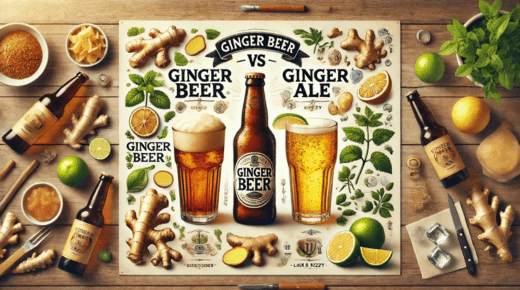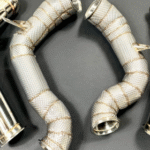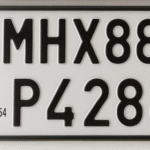1. Introduction to Ginger Beer and Ginger Ale
Ginger beer vs ginger ale ale are popular beverages that share a common ingredient: ginger. However, they differ significantly in taste, preparation, and usage. While ginger beer is brewed and fermented, ginger ale is carbonated water flavored with ginger. Understanding these differences can help you choose the right drink for your preferences and needs.
2. The Origins of Ginger Beer
Ginger beer dates back to the 18th century in England. It was originally a homemade beverage made by fermenting a mixture of water, sugar, ginger, and a starter culture. The fermentation process gave it a slightly alcoholic content, making it a popular choice among adults.
3. The Origins of Ginger Ale
Ginger ale, on the other hand, was invented in the 19th century by Canadian pharmacist John McLaughlin. Unlike ginger beer, ginger ale was created as a non-alcoholic beverage. It was designed to be a milder, more refreshing alternative to the strong and spicy ginger beer.
4. Brewing vs. Carbonation: Key Differences
One of the main differences between ginger beer and ginger ale is their production process. Ginger beer is brewed and fermented, which gives it a rich and robust flavor. Ginger ale is made by mixing carbonated water with ginger flavoring, resulting in a lighter and more delicate taste.
5. Flavor Profiles: Spicy vs. Mild
Ginger beer is known for its strong, spicy kick, thanks to the fermentation process that enhances the ginger’s natural heat. In contrast, ginger ale has a milder, sweeter flavor, making it more palatable for those who prefer a gentler ginger taste.
6. Alcohol Content: Ginger Beer’s Boozy Past
Historically, ginger beer contained alcohol due to fermentation. Modern commercial ginger beers are usually non-alcoholic, but some brands still produce alcoholic versions. Ginger ale, however, has always been non-alcoholic, making it a suitable option for all ages.
7. Uses in Cocktails: Ginger Beer’s Versatility
Ginger beer is a popular ingredient in cocktails, especially in classic drinks like the Moscow Mule and the Dark ‘n’ Stormy. Its strong flavor pairs well with spirits like vodka and rum, adding depth and complexity to these beverages.
8. Ginger Ale in Mixology
While ginger ale is also used in cocktails, it tends to be featured in simpler, lighter drinks. It’s often mixed with whiskey to create a refreshing Highball or combined with cranberry juice for a festive, non-alcoholic punch.
9. Health Benefits of Ginger
Both ginger beer and ginger ale contain ginger, known for its numerous health benefits. Ginger is effective in easing nausea, aiding digestion, and reducing inflammation. However, the health benefits can vary depending on the amount of real ginger used in the beverage.
10. Does Ginger Ale Have Caffeine?
One common question is whether ginger ale contains caffeine. Most ginger ale brands are caffeine-free, making them a suitable choice for those avoiding caffeine. Always check the label to be sure, as some flavored versions might contain added ingredients.
11. Popular Ginger Ale Brands
Several brands dominate the ginger ale market, each offering unique variations of the beverage. Canada Dry, Schweppes, and Seagram’s are among the most well-known, providing consumers with a range of options from classic to diet versions.
12. Ginger Beer Brands to Try
If you’re a fan of ginger beer, there are plenty of brands to explore. Fever-Tree, Bundaberg, and Gosling’s are popular choices, each offering their take on the traditional ginger beer recipe with varying levels of spice and sweetness.
13. Homemade Ginger Beer
Making ginger beer at home can be a fun and rewarding project. By fermenting ginger, sugar, and water, you can create a customized beverage tailored to your taste preferences. Plus, homemade ginger beer often contains more real ginger than commercial versions.
14. Cranberry Ginger Ale: A Festive Twist
cranberry ginger ale is a popular variation that combines the refreshing taste of ginger ale with the tartness of cranberry juice. This festive drink is perfect for holiday gatherings and can be enjoyed on its own or as a mixer in cocktails.
15. Ginger Beer in Culinary Uses
Beyond beverages, ginger beer can be used in cooking to add flavor to various dishes. It can be used as a marinade for meats, a base for sauces, or even incorporated into desserts for a spicy kick.
16. Ginger Ale in Cooking
Ginger ale can also be used in the kitchen. Its mild flavor makes it suitable for use in baking, adding a hint of ginger to cakes and cookies. It can also be used to create light, refreshing glazes for meats and vegetables.
17. Comparing Nutritional Content
When comparing ginger beer and ginger ale, it’s important to consider their nutritional content. Ginger beer typically contains more sugar due to the fermentation process, while ginger ale is often lower in calories but can contain artificial sweeteners.
18. Shelf Life and Storage
Both ginger beer and ginger ale should be stored in a cool, dark place to maintain their quality. Once opened, they should be refrigerated and consumed within a few days to ensure freshness and prevent spoilage.
19. Carbonation Levels: Bubbles Matter
The level of carbonation can affect the overall drinking experience. Ginger ale tends to be more highly carbonated, providing a crisp and fizzy sensation. Ginger beer, while also carbonated, often has a more subtle effervescence.
20. Availability and Price
Ginger ale is more widely available and generally more affordable than ginger beer. It’s commonly found in supermarkets and convenience stores. Ginger beer, especially artisanal and craft versions, can be pricier and may require a trip to a specialty store.
21. Dietary Considerations
For those with dietary restrictions, it’s important to read labels carefully. Some ginger beers and ginger ales may contain gluten, artificial flavors, or high levels of sugar. Opting for brands with natural ingredients can be a healthier choice.
22. The Role of Ginger Ale in Home Remedies
Ginger ale has long been used as a home remedy for various ailments. Its mild ginger content is believed to help soothe upset stomachs and alleviate symptoms of colds and flu. However, it’s essential to choose a brand with real ginger for maximum benefit.
23. Crafting the Perfect Moscow Mule
The Moscow Mule is a classic cocktail that showcases ginger beer’s versatility. Made with vodka, ginger beer, and lime juice, it’s a refreshing drink that’s easy to make at home. Experimenting with different ginger beer brands can enhance the cocktail’s flavor.
24. Non-Alcoholic Alternatives
For those seeking non-alcoholic options, ginger ale is a fantastic choice. Its mild flavor and versatility make it suitable for various mocktails and non-alcoholic drinks, providing a refreshing alternative to alcoholic beverages.
25. Choosing Your Favorite
Whether you prefer the bold, spicy taste of ginger beer or the mild, refreshing flavor of ginger ale, both beverages have their unique appeal. Understanding their differences in production, flavor, and usage can help you make an informed choice based on your taste preferences and dietary needs.
In conclusion, both ginger beer and ginger ale offer unique flavors and benefits, making them versatile options for various occasions. Whether you’re looking for a spicy kick or a mild refreshment, there’s a ginger beverage out there for everyone to enjoy.










